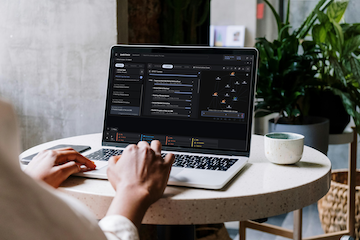Darktrace PREVENT™
PREVENT empowers the CISO and the security team to reduce cyber risk by continuously monitoring the organization’s internal and external attack surface, highlighting and prioritizing risks, and then autonomously hardening defenses as part of Darktrace’s Cyber AI Loop. PREVENT, which is now generally available, is already proving its value to early-adopter customers.
“We know that the bad guys are gaining knowledge every day. We need to as well. And I think that this type of proactive approach is a requirement now. I don’t think it is an option,” said Jim Davies, the Director of IT at US supply chain management company Ongweoweh.
PREVENT brings together several capabilities, including attack surface management, attack path modeling, breach and attack emulation, and pentest augmentation. By combining these into one end-to-end solution, the system and the humans who use it benefit from a full understanding of which countermeasures will mitigate risk to the greatest extent.
While the security team works on these countermeasures, PREVENT feeds its findings into Darktrace’s DETECTTM and RESPONDTM capabilities, which in turn harden defenses by heightening their sensitivity around risky assets. This happens autonomously, so the human security team can prioritize other work while the AI continuously hardens the security stack.
Surfacing Risks on the External Attack Surface
The Darktrace PREVENT product family currently consists of two interconnected modules: PREVENT/Attack Surface ManagementTM (ASM) and PREVENT/End-to-EndTM (E2E).
PREVENT/ASM uses AI to distinguish the company’s external assets on the internet, while only requiring the company’s brand name as input. Early adopters saw it reveal 30-50% more assets than they realized they had.
“As early as the proof of concept, there was demonstrated value with PREVENT which revealed some attack surface opportunities that none of our other security providers had come across.” said Jenny Moshea, Direct of Technology for Sellen Construction.
PREVENT/ASM is now being adopted by organizations large and small across a number of industries, revealing a wide range of surprising risks and vulnerabilities the security team was not previously aware of.
In one trial at a utilities organization, PREVENT/ASM identified unexpected access to a control system that was mission critical and could potentially impact the water facilities. Another customer was testing a new project in a cloud environment that was not meant to be publicly visible, let alone accessible. After PREVENT/ASM revealed that sensitive data was exposed and at risk of falling into the wrong hands, the security team was able to proactively get ahead of this risk by reconfiguring the system.
A Level Deeper: An Internal View of Risk
While PREVENT/ASM examines a company’s external assets, PREVENT/E2E leverages the AI understanding of a company’s internal digital infrastructure. This industry-first product consolidates and optimizes several risk management capabilities, including attack path modeling, pentest augmentation, breach and attack simulation, security awareness training, and cyber risk prioritization.
One early adopter benefited from PREVENT/E2E’s evolving insights, finding that it filled in the gaps of unknown risk between pentests.
“We’ve run pentests maybe four times a year, that’s at that point in time. We go correct those issues and then we’re basically waiting for the next one before we dig into it. As soon as we saw the tool, we were like wow this is a continual test every day, we’re able to go take a quick peek, see what’s going on out in the environment,” said Mike Sherwood, the Chief Information Officer for the City of Las Vegas.
After assessing the exposure, likelihood, and potential damage of every single device and attack path in the organization, PREVENT/E2E uncovered a major risk in one customer’s environment: a patch had failed to install on the disaster recovery domain controller – a vulnerability which the security team had not previously been aware of. With PREVENT’s findings, the team was able to quickly address and close this significant risk.
Another customer deployed PREVENT/E2E and discovered that the building’s air conditioning system was accessed by an account that had domain admin privileges. PREVENT/E2E informed the security team of this configuration, which would have allowed a threat actor easy lateral movement after targeting the IoT device.
An End-to-End Solution
Having established the most critical attack paths, PREVENT/E2E enables customers to test the validity of these attack paths through emulated attack campaigns. One customer was amazed to discover that the technology had learned the idiosyncrasies of a user’s communication patterns and launched an emulated social engineering attack that reflected the common spelling mistakes of the user being impersonated.
By learning how susceptible users are to social engineering attacks, the system gains an even better idea of how likely a particular attack path is, and factors this into the prioritization of its risk mitigation advice. This is yet another indicator of how combining different preventative cyber security measures into one solution gives the security team the insights they need to take practical, effective action to reduce cyber risk.
PREVENT has already boosted the cyber security postures of its early adopters, surfacing misconfigurations, brand abuse, shadow IT, and other significant risks.
“PREVENT is an incredibly helpful way to understand risk, particularly when comparing changes over time,” said Klint Price, the Head of Technology & Cybersecurity at facilities management company Vixxo. “Understanding vulnerabilities is one thing, but actually being able to digest and prioritize them is even better.”
































.jpeg)







